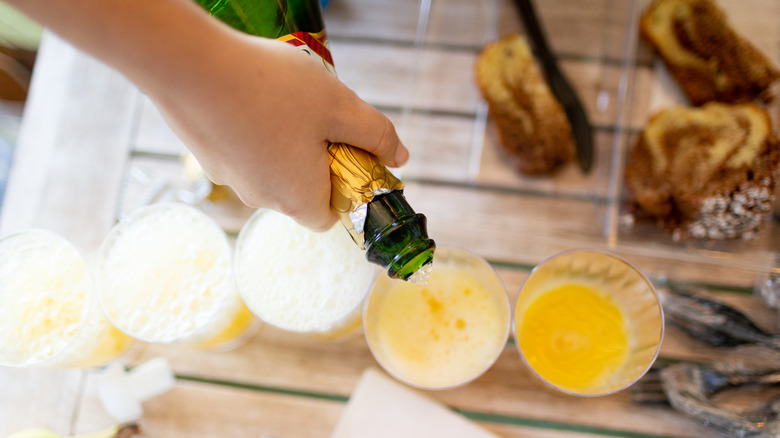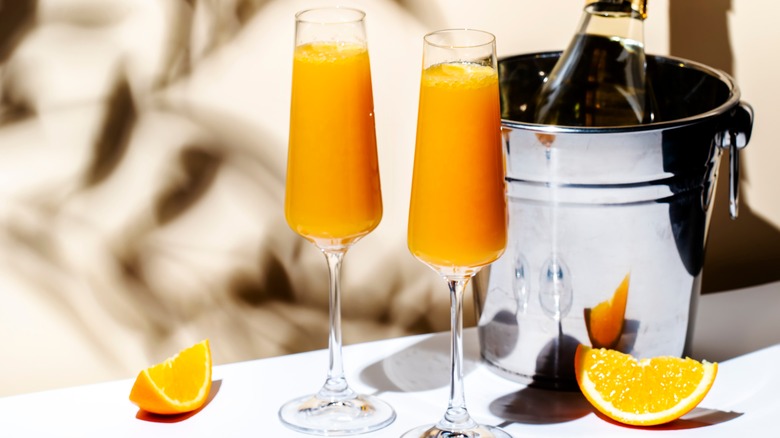The Best Type Of Champagne For Delicious Homemade Mimosas
You can never go wrong with crowd-pleasing mimosas. They're delicious and refreshing; simple with only two ingredients; and they're endlessly customizable, from the ratio of orange juice to sparkling wine to possible other flavors you can add. Before you tinker, though, it helps to know the basics. The secret lies in the right bubbly. By knowing which variety to use, you can make your next batch of mimosas right in your kitchen and wind up with high-end restaurant quality.
This requires understanding the profiles of the different types of Champagne in terms of a sweet-to-dry range. Doux or the more accessible demi-sec Champagnes are sweetest; demi-secs have about 32 to 50 grams of residual sugar per liter. If you prefer sweet drinks, it's worth seeking out demi-sec, but that much sweetness plus fruity juice won't be as well-balanced. Meanwhile, dry and extra dry Champagnes are not actually the dryest; those labels are in relation to the sweeter varieties. Dry Champagnes (which have 17 to 32 grams of sugar per liter), as well as the next-driest category, brut, are the best mimosa options. Bruts and extra bruts hover, respectively, at six to 12 and zero to six grams of sugar per liter.
Despite being less-sweet Champagnes, these categories are actually a sweet spot for these citrusy cocktails. Dry Champagnes are tougher to find — many Champagne houses don't make them anymore. So, you'll more likely end up with brut if you want to stay in this perfect middle ground.
Bruts are a happy medium of sweet and dry
Brut Champagnes still have a touch of sweetness, and that hint is indeed necessary, because orange juice has plenty of tartness to round it out. Bruts bring their own acidity to the party, which matches the OJ nicely, and their dry nature cuts the juice's fruitiness with a refreshing crispness. Brut Champagne and orange juice make for a mimosa that explodes with orange flavor and a crisp yet rounded cascade of effervescence.
However, bruts still aren't the driest Champagnes you can find. The final level is called brut nature or dosage zéro, with no sugar added before the wine is bottled. While these are stunning, dry, acidic sippers on their own, that dryness and acidity is too high to temper orange juice well. You could end up with a drink that's all acidity and not enough sweetness or roundness in the mouthfeel.
Regarding additional Champagne varieties, another strong mimosa contender is the blanc de blanc, made with only white grapes. It has other fruity notes like pear that play well with orange juice, plus botanical and mineral qualities. If you're tempted to try vintages and prestige cuvées, leave those for sipping straight. They're incredibly special and shouldn't be overshadowed with mixers. Once you get to know your preferred dryness level, you can think specifically about the best bottles for mimosas, like Perrier-Jouët Grand Brut for bruts or Laherte Frères Ultradition Extra Brut Champagne for extra bruts.

